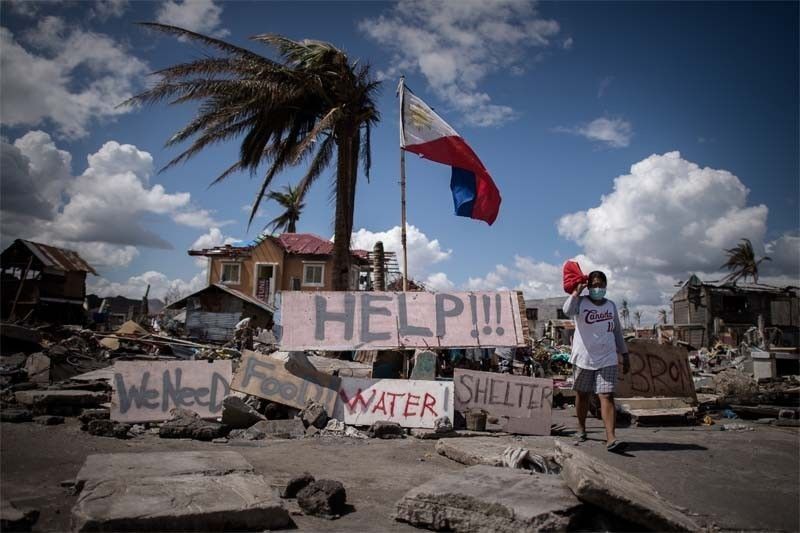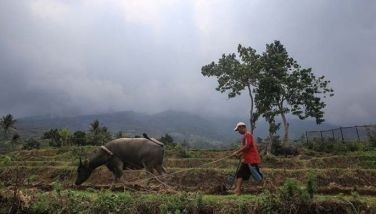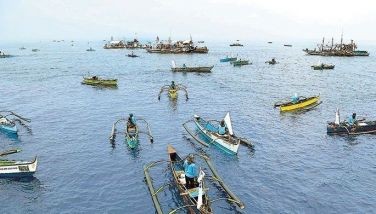'Yolanda' and 'Rolly': Super typhoons 7 years apart to hit the Philippines

MANILA, Philippines — Parallels have been made between super typhoons Yolanda (Haiyan) and Rolly (Goni) deemed to have been the strongest in the years that they hit the Philippines. But how are they exactly alike and different?
Both Yolanda and Rolly, for one, struck the Philippines in November, seven years apart from 2013 to now 2020.
By the time Yolanda made its first landfall, it already had 315 kph maximum sustained winds and gusts of up to 380 kph. Rolly, meanwhile, intensified even further before its first landfall with peak winds of 225 kph near the center and gusts of up to 310 kph.
It entered the Philippine Area of Responsibility on October 29 only as a severe tropical storm but eventually gaining more strength to first hit Bato in Catanduanes at around 4:50 a.m. on November 1.
Tiwi in Albay, was the second to experience the super typhoon's strength at 7:20 a.m., and had since been downgraded to typhoon status after, only to make another landfall this time in San Narciso in Quezon.
Yolanda had a total of six in just a single day on November 8, according to the final report of disaster officials.
Its first was at Guian in Eastern Samar (4:40 a.m.), moving to Tolosa in Leyte for its second (7 a.m.), to Daanbantayan in Cebu for third landfall (9:40 a.m.), then on to Bantayan Island in Cebu (10:40 a.m.) and over to Concepcion in Iloilo (12 p.m.) for its fourth and fifth, respectively.
Yolanda's final hit was at Busuanga in Palawan at 8 p.m. to emerge outside the country by the next day. But the extent of its damage was only about to unfold then.
The National Disaster Risk Reduction and Management Council then said a total of 161,973 families or 792,018 individuals from nine regions were preemptively evacuated due to Yolanda. In total, Yolanda's wrath affected over 3.4 million families or more than 16 million individuals.
For Rolly, initial government numbers showed 96,543 families or 346,993 persons evacuated in emergency shelters.
The NDRRMC also estimates that 19 to 31 million may be affected due to it. It was also the first time in a while for the National Capital Region to be placed under Signals No. 3 and 4.
The agency's numbers of fatalities from Yolanda showed 6,300 dead, while 1,062 were reported missing and 26.688 injured. While Rolly's onslaught has yet to conclude, Albay Governor Al Francis Bichara had reported that at least four people had been killed, which included a five-year-old.
Bichara, speaking to Agence France Presse, said two victims had drowned, one swept away by volcanic mud and the last killed by a falling tree.
NDRRMC records said Yolanda is "the worst typhoon to ever hit the Philippines to date" and is Number 1 among the top 10 worst storms in terms of damage to properties at P93 billion, as well as for casualties.
Eastern Visayas had sustained the heaviest losses, both in deaths and in damage. Figures showed that 5,902 or 93% of the total fatalities came from the region, with most "due to drowning and trauma" while also accounting for damage worth P68.7 billion.
The number of damaged houses was at 1,140,332, with 550,928 totally, and the remaining 589,404 were partially damaged.
Seven years later, rehabilitation for areas hit by Yolanda continues, with 37,414 out of the 53,038 housing units completed, data from the National Housing Authority showed. Government has also reported that 133,107 of the 195,388 planned housing units for the whole Yolanda corridor have been completed.
By the afternoon of November 1, Rolly was seen over the coast waters of Mulanay in Quezon, carrying peak winds of 175 kph and gusts of up to 240 kph. And while it has weakened, state weather bureau PAGASA cautioned that it remains threatening, with "violent winds and intense rainfall" seen over Marinduque, Laguna, and the eastern portions of Batangas and Cavite.
The term "storm surges" were also familiar during the Yolanda crisis. The Nationwide Operational Assessment of Hazards, otherwise known as "Project NOAH" that government defunded in 2017, said these were "primarily responsible" for the deaths, missing and injured from the super typhoon.
"Although specific warnings in places likely to be hit by 4 to 5 meter storm surges were provided," Project NOAH's website read, "it was not sufficient to elicit the appropriate response."
"Moving 100 meters or even 1,000 meters inland from the coastline would seem enough, but not quite. Yolanda storm surges entered as far as 2 km inland," the website report continued.
Now, PAGASA said the threat of a storm surge is also possible and could reach up to three meters over the northern coastal areas of Quezon, including Polilio Islands, coastal areas of Metro Manila, Cavite, Bulacan, Pampanga, Bataan, southern coastal areas of Batangas, and most of the southern coastal areas of Quezon province.
A storm surge of two meters, meanwhile, could also reach the coastal areas of Marinduque, Lubang Island, Albay, Masbate, northern coastal area of Mindoro provinces and the remaining coastal areas of Quezon and Batangas.
"These storm surges, which may be accompanied by swells and breaking waves reaching the coast can cause life-threatening and damaging coastal inundation," the weather bureau said.
Rolly, the 19th storm to hit the Philippines in a tumultuous year for the country that saw a volcanic eruption and an ongoing public health crisis, could emerge over the West Philippine Sea by Sunday night.
- Latest
- Trending
































